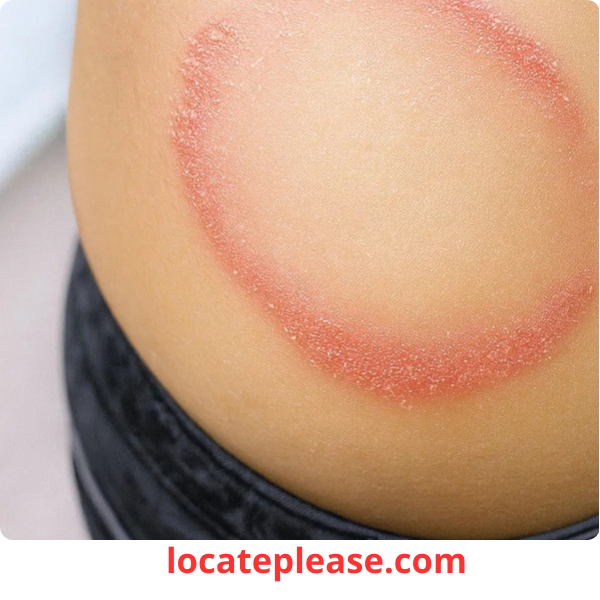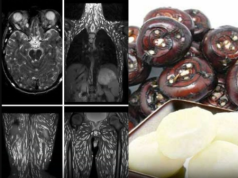Fungal skin infections are more common than you think — affecting millions of people worldwide each year.
And one of the most misunderstood? Ringworm.
Despite its name, ringworm isn’t caused by a worm at all.
It’s a fungal infection — highly contagious, often itchy, and easily mistaken for other skin conditions.
The good news?
With the right knowledge and treatment, skin fungus is easy to identify, treat, and prevent.
In this complete guide, you’ll learn:
- What skin fungus and ringworm really are
- How to recognize the symptoms
- Medical and natural treatments that work
- And how to stop reinfection before it starts
Let’s clear the confusion and get your skin back to health.
🧫 What Are Skin Fungi?
Fungi are microscopic organisms that naturally live on our skin, hair, and nails.
Under normal conditions, they’re harmless.
But when the environment becomes warm, moist, and dark — like sweaty feet in tight shoes or damp skin folds — fungi can multiply rapidly and cause infection.
Common types of fungal skin infections include:
✅ 1. Ringworm (Dermatophytosis)
- Caused by dermatophytes — fungi that feed on keratin (a protein in skin, hair, and nails)
- Appears as a red, ring-shaped rash
- Can affect the body, scalp, feet, groin, and nails
✅ 2. Cutaneous Candidiasis
- Caused by Candida albicans, a yeast that thrives in moist areas
- Common in armpits, groin, under breasts, and between fingers
- Causes red, raw, itchy patches
✅ 3. Onychomycosis (Fungal Nails)
- Fungal infection of fingernails or toenails
- Nails become thick, discolored (yellow or brown), brittle, and sometimes separate from the nail bed
✅ 4. Pityriasis Versicolor
- Caused by Malassezia yeast
- Produces light or dark patches on the chest, back, and shoulders
- Common in warm, humid climates
🌀 What Is Ringworm? (Spoiler: No Worms Involved!)
Ringworm — or tinea — is a superficial fungal infection that gets its name from the circular, ring-like rash it often causes.
It’s highly contagious and spreads through:
- Direct skin contact with an infected person or animal
- Touching contaminated surfaces (gym mats, towels, showers)
- Sharing clothing, shoes, or combs
Despite the name, no worm is involved — just fast-spreading fungi.
🔍 Types of Ringworm and Their Symptoms
|
Tinea Corporis
|
Body (arms, legs, torso)
|
Red, circular rash with raised edges and a clearer center; itchy and scaly
|
|
Tinea Capitis
|
Scalp
|
Scaly patches, hair loss, black dots (broken hairs), dandruff-like flakes; common in children
|
|
Tinea Pedis(Athlete’s Foot)
|
Feet (especially between toes)
|
Itching, burning, cracked skin, peeling, foul odor
|
|
Tinea Cruris(Jock Itch)
|
Groin, inner thighs
|
Red rash with defined edges, itching, burning; worsens with sweating
|
|
Tinea Unguium
|
Nails
|
Thickened, discolored, brittle nails; may separate from the nail bed
|
🦠 How Is Skin Fungus Transmitted?
Fungi thrive in warm, damp environments. You can catch a fungal infection through:
- Direct contact with an infected person or pet (cats, dogs, livestock)
- Indirect contact with:
- Towels, clothing, or shoes
- Gym equipment, pool decks, or communal showers
- Combs, brushes, or nail clippers
🚩 Risk Factors:
- Sweating heavily
- Wearing tight, non-breathable clothing
- Walking barefoot in public pools or locker rooms
- Weakened immune system
- Diabetes
- Poor hygiene
💊 Medical Treatments for Skin Fungus and Ringworm
Treatment depends on the type, location, and severity of the infection.
A) Topical Antifungals (For Mild Cases)
Applied directly to the skin, these creams are available over-the-counter (OTC) or by prescription:
|
Clotrimazole
|
Canesten, Lotrimin
|
Apply 2x daily for 2–4 weeks
|
|
Miconazole
|
Daktarin, Micatin
|
Apply to clean, dry skin twice daily
|
|
Terbinafine
|
Lamisil
|
Highly effective; use for 1–2 weeks
|
|
Ketoconazole
|
Nizoral Cream
|
For stubborn or recurring infections
|
✅ Tip: Continue treatment 7–10 days after symptoms disappear to prevent relapse.
B) Oral Antifungal Medications (For Severe or Widespread Infections)
Prescribed for:
- Scalp ringworm (Tinea Capitis)
- Nail fungus (Onychomycosis)
- Widespread body infections
Common options:
- Terbinafine – Gold standard for nail and skin fungus
- Itraconazole – Broad-spectrum, often used for scalp infections
- Fluconazole – Effective for Candida and some dermatophytes
⚠️ Note: Oral antifungals may affect the liver — regular blood tests may be required.
C) Special Treatments for Specific Cases
- Onychomycosis: Antifungal nail lacquers (e.g., amorolfine) + oral meds for months
- Tinea Capitis: Oral griseofulvin or terbinafine + antifungal shampoo (like ketoconazole)
🌿 Natural Remedies That Can Help (Alongside Medical Treatment)
While natural remedies should not replace medical treatment for active infections, some can support healing and prevent recurrence.
1. Apple Cider Vinegar
- Antifungal properties due to acetic acid
- How to use: Soak a cotton ball and apply to the area 2x daily
- Great for athlete’s foot and nail fungus
2. Tea Tree Oil
- Powerful antifungal and antibacterial
- How to use: Dilute with coconut oil (50/50), apply 2x daily
- Effective for jock itch and mild ringworm
3. Garlic
- Contains allicin, a natural antifungal compound
- How to use: Crush a clove, mix with coconut oil, apply for 30 minutes, then rinse
- Can be messy — use with a bandage
4. Baking Soda
- Absorbs moisture and creates an inhospitable environment for fungi
- How to use:
- Sprinkle in shoes and socks
- Make a paste with water and apply to affected skin
- Soak feet in baking soda water (1/4 cup per basin)
5. Aloe Vera
- Soothes irritation and has mild antifungal effects
- How to use: Apply fresh gel 2–3 times daily
- Best for soothing inflamed skin
✅ Important: Natural remedies work best as preventive or supportive tools — not cures for active infections.
✅ Prevention: How to Stop Fungus Before It Starts
Prevention is your best defense.
🛡️ Daily Habits to Prevent Skin Fungus
- Keep skin clean and dry, especially folds and between toes
- Wear breathable clothing and moisture-wicking socks
- Change socks and underwear daily
- Avoid walking barefoot in public showers, pools, or gyms — wear flip-flops
- Never share towels, shoes, or nail clippers
- Wash workout clothes after each use
- Disinfect gym bags, mats, and shoes regularly
👟 For Athlete’s Foot:
- Dry feet thoroughly after showers
- Rotate shoes to let them air out
- Use antifungal powder in shoes
💇 For Scalp Infections:
- Use antifungal shampoo (ketoconazole) weekly if prone to dandruff
- Avoid sharing combs or hats
🚨 When to See a Doctor
Seek medical help if you have:
- Worsening redness, swelling, or pain (signs of bacterial infection)
- Fever or pus (possible secondary infection)
- No improvement after 2–3 weeks of OTC treatment
- Nail changes or hair loss
- Recurrent infections
A doctor can confirm the diagnosis with a skin scraping or KOH test and prescribe stronger treatment.
💡 Final Thoughts: Skin Fungus Is Common — But Not Normal
Yes, fungal infections are widespread.
But just because they’re common doesn’t mean you should suffer in silence.
With early detection, proper treatment, and smart prevention, you can clear up ringworm and keep it from coming back.
So don’t scratch, don’t ignore it, and don’t assume it’s “just a rash.”
Treat it.
Stop the spread.
Get your skin back.
Healthy skin isn’t just about looks — it’s a sign of your body’s balance and well-being.










